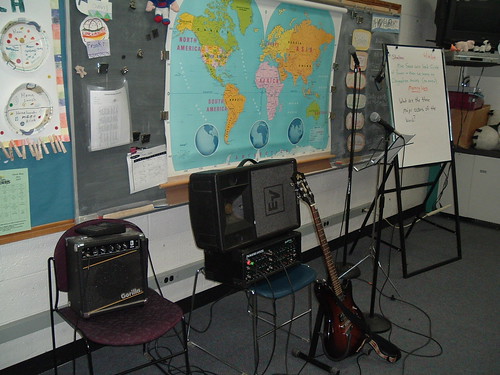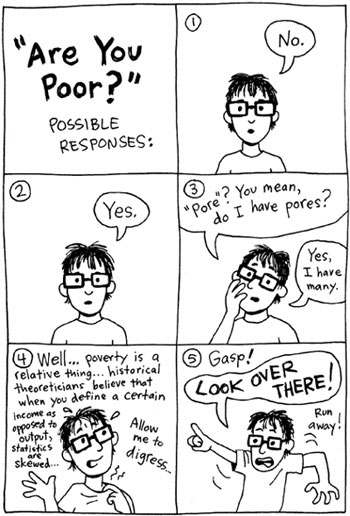Yesterday, I posted some ideas that I have when it comes to Literacy. As I thought more about it over the course of the day, I began to watch the work my students were doing through that same lens. I thought it might be useful, then, to reflect on what I saw and why it seemed important.
A little perspective: we are near the end of our poetry unit (songwriting is on the horizon to end the year!) and students have a poetry journal that we have been using just about every day. I would say they have about 15 to 20 poems in their journal. Yesterday, we first took one of those poems called Inside This … (which uses figurative language to get at the essence of an inanimate object) and podcast them for our class blog site. Then, we began an assignment called Hyperlinked Poetry Books, in which they take at least six of their favorite poems, create a book in Powerpoint and then learn and use the architecture of hyperlinks to create a series of “connected paths” between their poems so that the book is no longer linear.
First: the Inside This podcast poem.
This short poem covers a lot of ground. My students have to use the Figurative Language techniques that we learned about earlier in the year — reviewing similes, metaphors, alliteration and more — as part of their writing toolbox. They are writing to learn by exploring some object from an entirely non-physical perspective, with a poet’s stance, using tools that are a center of the curriculum. The Stakes Approach is on full display, too, as they move from low stakes (their journal) to high stakes (the podcast for a web-based audience). The various elements of language arts are on display — writing the poem, reading the poem for errors, speaking the poem for podcast, and then listening to others (and later, at the blog, to themselves). Certainly technology is here, with the podcasting, but this prompt does not push its way into other curricular areas.
Next: the Hyperlinked Poetry Book.
Since this assignment is self-evaluate poems that they have written, my students must look at their own writing through the eye of an editor. How will they choose which poems to feature? This, in itself, is a writing process. And part of their book are two reflections: which poetry style did they enjoy and why and which did they not enjoy and why not? Again, the Stakes Writing approach encompasses much of this work, as they move from their own journal (low stakes) to sharing with their writing class (mid-stakes) to potentially sharing their poems with the world on our blog site (high stakes). This is not even a graded assignment, but NOT ONE of my 75 young writers even asked about that. They were totally engaged in creating this book of poems and links. For most, this assignment will cover writing and reading in the Language Arts umbrella, but for others, they might add them reading their poems — pushing the spectrum out a little further. The technology and writing are hand-in-hand for this assignment, as they both publish their writing on a digital platform and learn how hyperlinks are the backbone of the Internet through shared informational traits (why did you choose that keyword? What connects this poem to the next? How do you avoid setting up an “endless loop” between two poems?). In some years, we do write poems around curricular areas (we read math-themed Poems for Two Voices this year but did not write our own) and so my concept of writing into other curricular areas … not so good again.
Peace (in sharing),
Kevin






